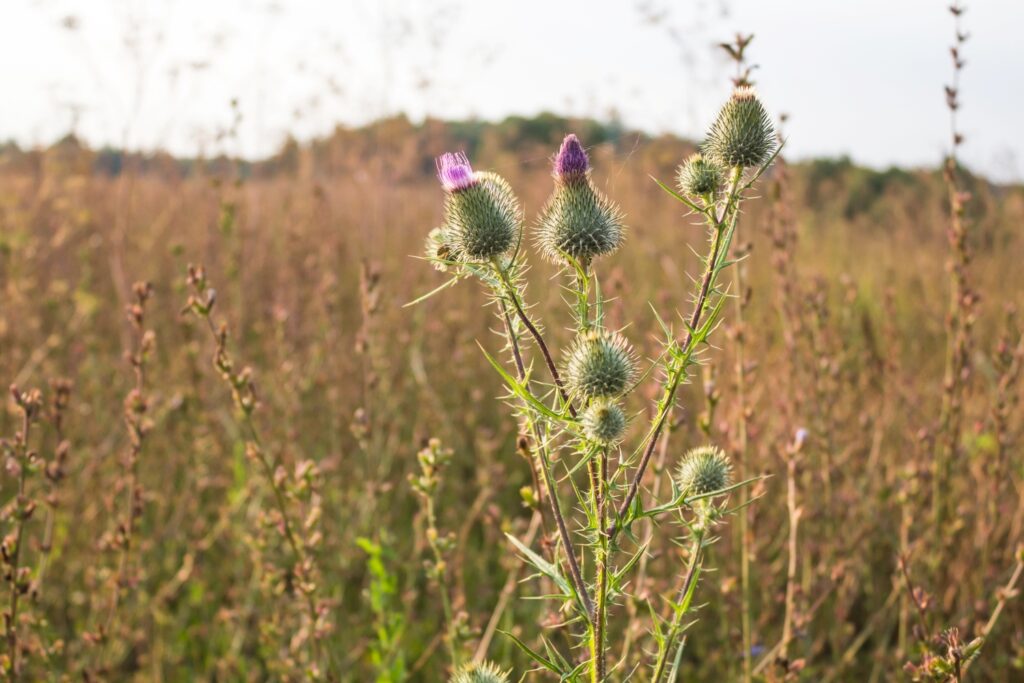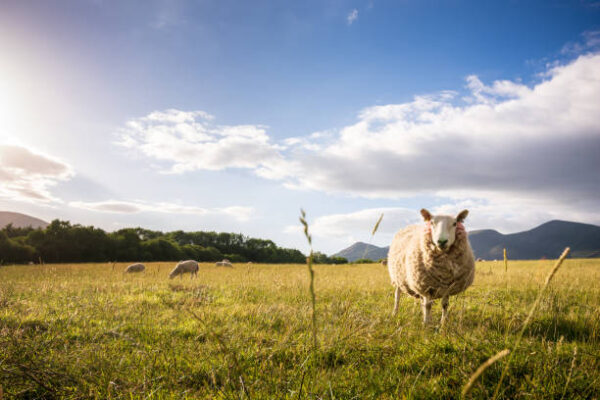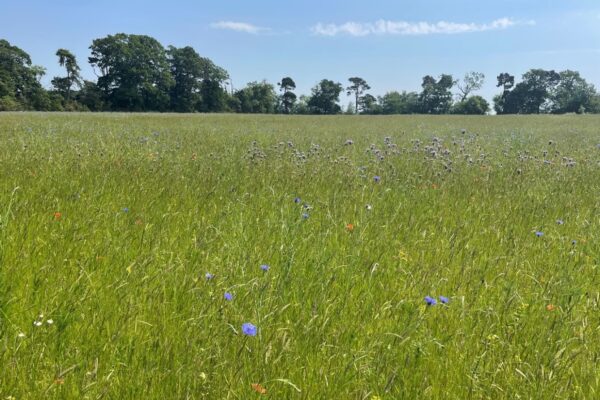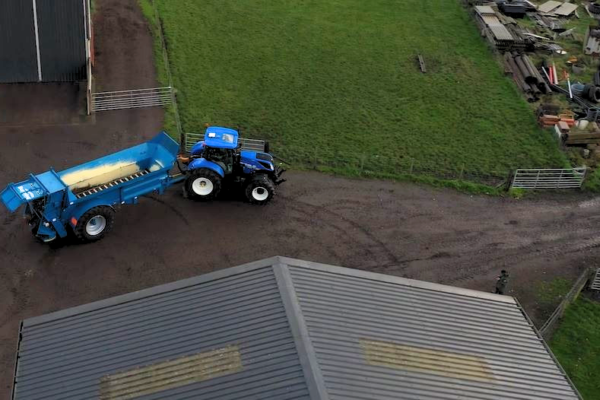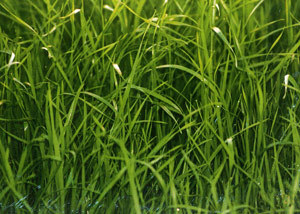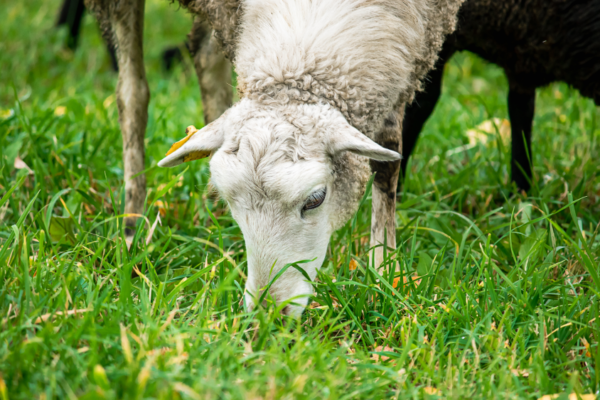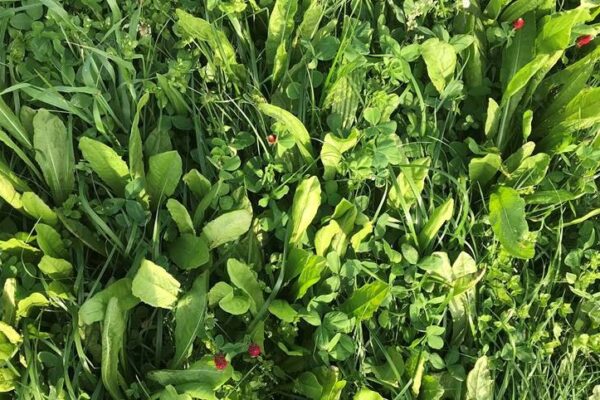Tips for Better Weed Control in Grassland – Docks, Thistles & Rushes
10 July 2025Weeds in grassland can reduce yield and pose risks to animal health if not managed effectively. As chemical control options which preserve clover are limited, prevention is the most effective strategy. A dense, healthy sward of grass can outcompete weeds, while avoiding poaching or overgrazing helps prevent weeds establishing.
The most common weeds in grassland are docks, thistles and rushes
Docks
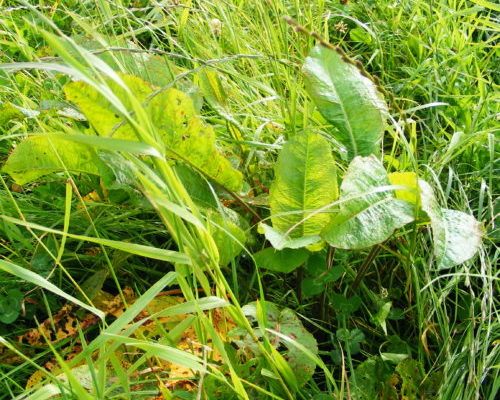
The large leaves of dock plants can shade out your grass, reducing productivity. Only the young shoots and some of the young leaves are eaten by cattle. The fully developed leaves are usually only eaten by goats and sheep because of their high content of oxalic acid.
A single dock plant can produce up to 60,000 seeds a year. These seeds only spread a few meters by wind, but they can survive passage through ruminants and remain viable in hay, straw, and manure. Unripe seeds can continue to mature and germinate even after the stems have been cut, so bear that in mind.
Their roots have great energy stores and are protected from rotting by tannins. This means that Docks have a great re-sprouting ability and have a low sensitivity to cutting.
The taproot on a dock plant can grow through compacted, waterlogged, oxygen-poor soil down to depths of 2.6 m. The taproot has regenerative buds on the root crown, down to a soil depth of 10–12 cm.
Tips for Managing Docks
Avoid the plants flowering and shedding seeds which could be through rotational grazing, topping or chemical applications. Docks should be topped or grazed throughout the season to prevent any more viable seeds entering the ground.
Chemical applications are usually applied in May or June before plants flower with a Fluroxypyr and Triclopyr based product such as Doxstar. If using chemical control read the label thoroughly for any contra indications such as harvest and grazing intervals.
Later in the growing season , as plants start to shut down for winter, they take energy reserves back into roots so a later chemical application may increase efficacy.
Thistles
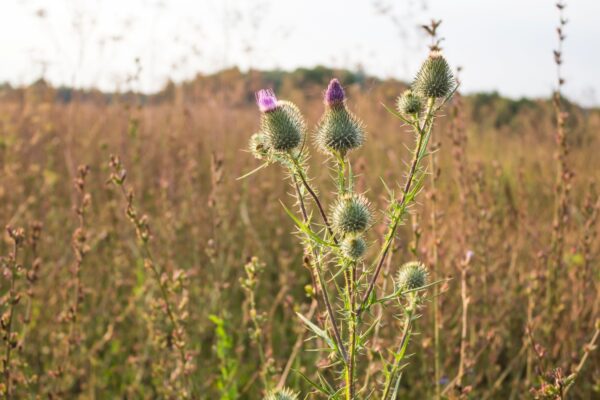
There are two types of thistles you need to consider. Creeping thistles, and Scotch thistles. Creeping thistles are perennial, while Scotch thistles are biennial.
Creeping thistles
- Spread through creeping stolons more than through seed shed
- Late Summer, early Autumn plants take sugar into roots
- Creeping roots replaced annually
- 1 in 5 buds form shoots, 3 out of 5 shoots survive
- Areas of thistles can expand 6-12 metres per year
- 4-year programme for eradication through repeated cutting
- 80% of seeds are viable 9 days after flowering
Scotch thistles
- Seeds attached to a pappus allowing it to be windborne
- Tap rooted plant
- Can produce up to 40000 seeds per plant
- Remain viable in the soil for 30 years
Tips for Managing Thistles
With thistles, timing is critical. It’s critical that you avoid them flowering and spreading more viable seeds. Topping larger thistles to ensure any herbicide applications catch as many at the correct stage is recommended. Research from Beef and Lamb NZ showed that topping multiple times a year and, in the rain, can be more effective than topping in dry conditions.
If you are using chemicals, treat for thistles with product containing Clopyralid based product.
As scotch thistles are biennial it can be difficult to catch them all at the right stage. Plan for it likely taking a few years to control all thistles.
Rushes
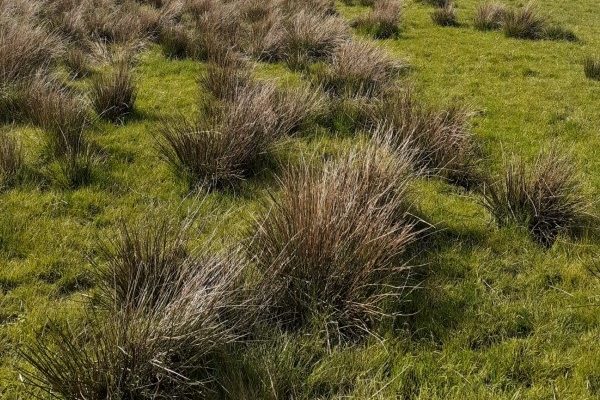
These weeds thrive in waterlogged, acidic soils and every 10% of infestation represents a 10% reduction in your grass yield. They are spread by creeping rhizomes in the soil and a single seed head can produce 8500 seeds per year and can be spread in the wind, remaining viable in the soil for 60 years
Persistent areas of rushes are associated with underlying issues such as drainage, low pH and low soil phosphate levels.
There is, however, a wildlife value to rushes. Wading birds also like rushes at no more than 30cm high and at about 30% ground cover. Leaving strips or shelter boundaries for lambs can be useful as well.
Tips for Managing Rushes
Topping is intended to control top growth and prevent seed shed. Bear in mind that it may need to be carried out multiple times a year and is costly in time and diesel.
If you’re using chemicals, control with either an MCPA based product and wetting agent or an MCPA/24d. Rushes can be controlled with glyphosate either through a weed wipe to protect grass below or as part of whole field desiccation.
Recommended to top rushes in April-June and spray 4 weeks later or spray first then top the dead material. Rushes are easier to control earlier in the season when stems are still soft.
Ensure you have read the label thoroughly and chemical is being applied by a suitably qualified person. MCPA in watercourses can be a common problem and is regularly detected by water companies.
Cutting in a mosaic pattern to provide a balance between controlling the population and encouraging ground nesting birds. Those ground nesting birds also like to eat worms, worms like neutral soil pH so there are multiple benefits from liming.
General Tips for your Grassland
- Read herbicide labels carefully.
- Avoid overgrazing your grassland to maintain a competitive sward.
- Monitor regularly to catch infestations early.
Sign up to the FAS newsletter
Receive updates on news, events and publications from Scotland’s Farm Advisory Service

